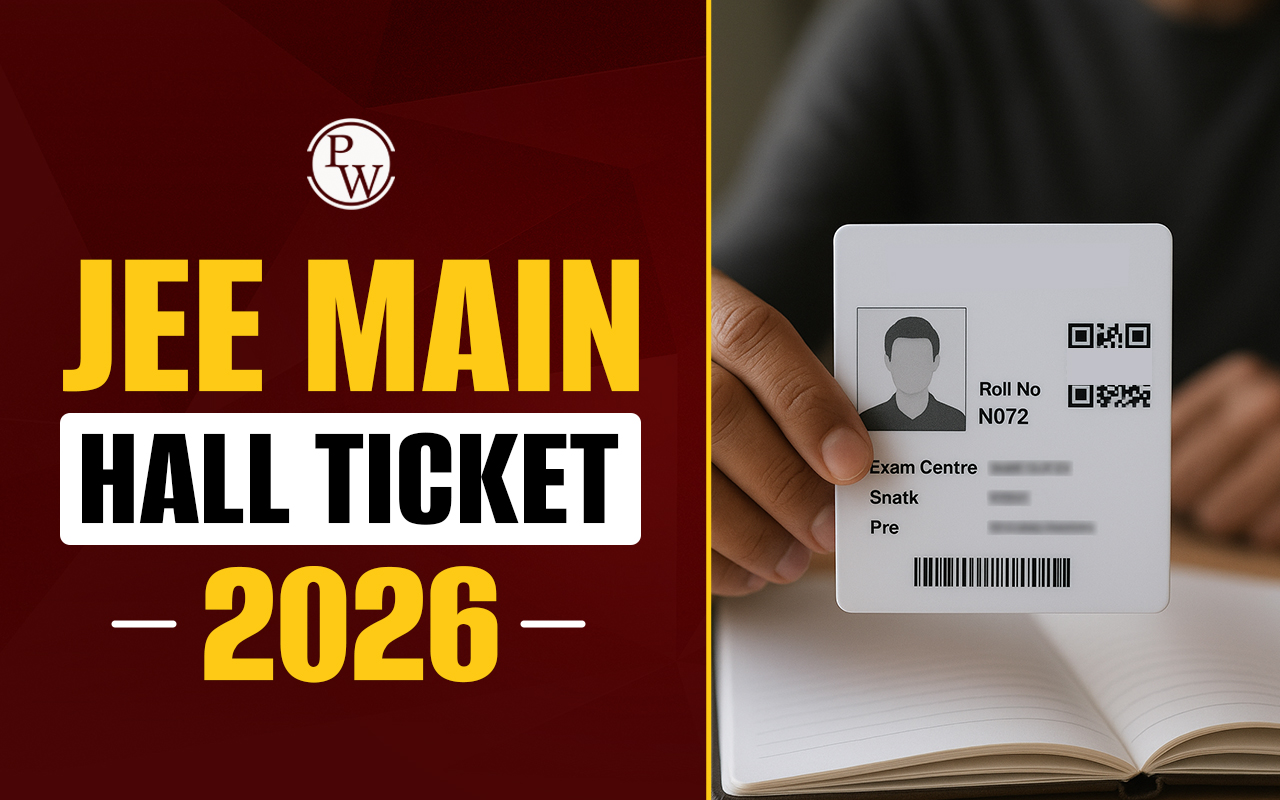
Difference Between IITs and NITs: When considering higher education in engineering, students often weigh the options between Indian Institutes of Technology (IITs) and National Institutes of Technology (NITs). Both institutions are highly esteemed, but they differ in several key aspects, including their admission processes and the role of the JEE (Joint Entrance Examination).
This article explores the difference between IITs and NITs, covering their admission processes, and examines how the JEE exam plays an important role in gaining entry into these prestigious institutions.Difference Between IITs and NITs
The Indian Institutes of Technology (IITs) and National Institutes of Technology (NITs) are two of India's premier engineering institutions, each with its own unique strengths and distinctions. IITs are renowned for their prestigious reputation both nationally and internationally, often regarded as the pinnacle of engineering education in India. Admission to IITs is highly competitive, requiring students to clear the rigorous JEE Advanced exam after qualifying in the JEE Main. On the other hand, NITs are also highly respected, particularly within India, and provide quality education in engineering and technology. Admission to NITs is primarily through the JEE Main exam, which, while competitive, is generally less challenging compared to the JEE Advanced.IITs vs NITs: Difference Between IIT and NIT Highlights
IITs were established in the 1950s to foster world-class engineering and technology education. As of 2024, there are 23 IITs spread across India, each known for its exceptional academic excellence and research opportunities.- IITs offer a range of undergraduate, postgraduate, and doctoral programs in various engineering and technology disciplines. Admission to IITs is primarily through the Joint Entrance Examination (JEE) Advanced, which follows the JEE Main exam.
- While NITs may have lesser international prestige when compared to IITs, they are well-regarded for their solid educational standards, practical training, and strong industry connections.
| IITs vs NITs Highlights | ||
| Criteria | IIT | NIT |
| Year of Establishment | 1950 | 1960 |
| Number of Institutions | 23 | 31 |
| Admission Criteria | JEE Advanced | JEE Mains |
| Average Total Fees | INR 2 to 5 Per Year | INR 1 to 2 Per Year |
| Average CTC During Placements | INR 20 to 30 LPA | INR 10 to 15 LPA |
IITs vs. NITs- Total Number of Institutes Across India
India is home to 23 prestigious Indian Institutes of Technology (IITs) and 31 National Institutes of Technology (NITs). Both sets of institutions are popular among engineering aspirants for their advanced education, research, and technological innovation in the country. Below is a list of IITs and NITs that contribute to the nation's educational excellence:| IITs in India | |||
| IIT Guwahati | IIT Ropar | IIT Dhanbad | IIT Jammu |
| IIT Bombay | IIT Kharagpur | IIT Indore | IIT (BHU) Varanasi |
| IIT Delhi | IIT Kanpur | IIT Goa | IIT Palakkad |
| IIT Gandhinagar | IIT Roorkee | IIT Mandi | IIT Tirupati |
| IIT Hyderabad | IIT Bhubaneswar | IIT Bhilai | IIT Dharwad |
| IIT Madras | IT Patna | ||
| NITs in India | |||
| NIT Calicut | NIT Durgapur | NIT Jalandhar | NIT Manipur |
| NIT Warangal | NIT Kurukshetra | MNIT Jaipur | NIT Agartala |
| NIT Jamshedpur | NIT Arunachal Pradesh | NIT Mizoram | NIT Puducherry |
| NIT Trichy | NIT Nagpur | NIT Patna | NIT Uttarakhand |
| NIT Surathkal | NIT Allahabad | NIT Silchar | NIT Srinagar |
| NIT Rourkela | NIT Bhopal | NIT Hamirpur | NIT Meghalaya |
| NIT Surat | NIT Sikkim | NIT Nagaland | NIT Delhi |
| NIT Goa | NIT Raipur | ||
Difference Between IITs and NITs- Admission Process
Both IITs and NITs utilize the JoSAA Counselling process to allocate seats to students during admissions to the BTech programs, ensuring a fair approach. However, for IITs, the counseling is based on the scores from the JEE Advanced exam. On the other hand, NITs use JEE Main scores for their counseling process. Check the difference between IITs and NITs admission process as explained below.- IITs: Admission to IITs requires passing two important entrance examinations: JEE Main and JEE Advanced. First, applicants must perform well in JEE Main, which is the preliminary examination. Based on their JEE Main Scores , they become eligible to appear for JEE Advanced. Only those who qualify JEE Advanced are admitted to IITs.
- NITs: To gain admission to NITs, applicants need to pass only the JEE Main examination. NITs do not require aspirants to appear for JEE Advanced. Thus, the admission process for NITs is somewhat less challenging compared to IITs.
| Difference Between IITs and NITs: Admission Process | ||
| Aspect | IITs | NITs |
| Exams Required | JEE Main and JEE Advanced | Only JEE Main |
| Eligibility for JEE Advanced | Must Pass JEE Main to Appear for JEE Advanced | JEE Main Score is Sufficient |
| Counseling Process | JoSAA Based on JEE Advanced Scores | JoSAA Based on JEE Main Scores |
| Seat Allocation | Based on JEE Advanced Rank | Based on JEE Main Rank |
| Admission Criteria | JEE Advanced Scores are Mandatory | JEE Main Scores are the Sole Criteria |
Difference Between IITs and NITs- JoSAA Opening & Closing Ranks for B.Tech Admission
The JEE Cut Off marks for admission to IITs and NITs differ significantly due to the distinct level of competition and selection criteria. For IITs, the JEE Advanced Cut Off is known for its high difficulty level. On the other hand, NITs use JEE Main Cut Off ranks, which generally have lower benchmarks compared to JEE Advanced. Both institutions maintain high standards but cater to different levels of academic achievement. To understand better, check out the IIT Madras JEE Advanced Cut Off 2024 vs NIT Trichy JEE Main Cut Off 2024 outlined below.| NIT Trichy JEE Main Cut Off 2024 for OPEN Category (Round 1) | ||
| Academic Program Name | Opening Rank | Closing Rank |
| B.Tech. Computer Science and Engineering | 1196 | 4178 |
| B.Tech. Electrical and Electronics Engineering | 6688 | 9043 |
| B.Tech. Electronics and Communication Engineering | 2712 | 6799 |
| B.Tech. Chemical Engineering | 7616 | 19178 |
| B.Tech. Civil Engineering | 19131 | 30998 |
| B.Tech. Instrumentation and Control Engineering | 9828 | 14032 |
| B.Tech. Mechanical Engineering | 9290 | 14173 |
| B.Tech. Metallurgical and Materials Engineering | 18454 | 25195 |
| B.Tech. Production Engineering | 14697 | 23337 |
| B.Tech. Architecture (5 Years) | 2 | 318 |
| IIT Madras JEE Advanced Cut Off 2024 for Open Category (Round 1) | ||
| Course Name | Opening Rank | Closing Rank |
| B.Tech. Biological Engineering | 3135 | 5491 |
| B.Tech. Chemical Engineering | 2024 | 3885 |
| B.Tech. Aerospace Engineering | 1469 | 2801 |
| B.Tech. Artificial Intelligence and Data Analytics | 132 | 415 |
| B.Tech. Civil Engineering | 3305 | 5516 |
| B.Tech. Computer Science and Engineering | 76 | 159 |
| B.Tech. Electrical Engineering | 299 | 835 |
| B.Tech. Metallurgical and Materials Engineering | 3770 | 4658 |
| B.Tech. Naval Architecture and Ocean Engineering | 4274 | 7187 |
| B.Tech. Engineering Physics | 931 | 1775 |
| B.Tech. Mechanical Engineering | 458 | 2302 |
Difference Between IITs and NITs - Fee Structure
IITs and NITs are top engineering institutions in India, each with their own different fee structures. IITs have a standard fee of around INR 2,50,000 per year, while NITs have a variable fee structure set by the NIT Council, including various components. Check out the IITs vs NITs BTech course in the table below.| IIT BTech Course Fee | ||
| IIT Name | Semester Wise fees | Total Fees (INR) |
| IIT Dhanbad | 1,00,000 | 8,00,000 |
| IIT Delhi | 1,07,800 | 8,50,000 |
| IIT Guwahati | 1,11,750 | 8,50,000 |
| IIT Bombay | 1,19,750 | 9,50,000 |
| IIT Bhubaneswar | 1,43,000 | 10,00,000 |
| IIT Bhilai | 1,08,000 | 8,00,000 |
| IIT Dharwad | 1,22,786 | 9,70,000 |
| IIT Gandhinagar | 1,28,500 | 10,00,000 |
| IIT Kharagpur | 1,48,700 | 10,00,000 |
| IIT Kanpur | 1,12,142 | 8,50,000 |
| IIT Indore | 1,28,650 | 10,00,000 |
| IIT Jodhpur | 1,18,275 | 9,00,000 |
| NIT BTech Course Fee | |||
| Name | Tuition Fees (per semester) (INR) | Other Fee (One-time Payment) (INR) | Hostel Fees Charges (INR) |
| NIT Andhra Pradesh | 62,500 | 27,500 | 38,000 |
| NIT Uttarakhand | 62,500 | 33,000 | 20,291 |
| NIT Tiruchirappalli | 62,500 | 24,000 | 11,100 |
| NIT Silchar | 48,500 | NA | 25,500 |
| NIT Manipur | 77,000 | NA | 28,800 |
| NIT Kurukshetra | 62,500 | NA | 93,500 |
| NIT Rourkela | 62,500 | 10,000 | 17,500 |
| NIT Mizoram | 69,350 | NA | 26,400 |
| NIT Warangal | 62,500 | NA | 39,000 |
IITs vs NITs- Role of JEE Exam in Securing Seat
JEE is a vital entrance examination for students aiming to enter prestigious engineering institutes like IITs and NITs in India. While both institutions use JEE scores for admissions, understanding the IITs vs NITs differences can help aspirants better prepare for their entrance into these esteemed institutions.-
Role of JEE Exam in Entering IITs
- Two-Step Examination Process: Students must first clear JEE Main. Those who qualify are eligible to take JEE Advanced.
- JEE Advanced Scores: Only the scores from JEE Advanced are used for admission into IITs.
- High Competitiveness: The process is highly selective, as JEE Advanced is known for its challenging questions and stringent cut-offs.
-
Role of JEE Exam in Entering NITs:
- Single Examination Process: Admission is based solely on JEE Main scores.
- Direct Use of Scores: JEE Main scores are directly used for securing a seat in various undergraduate programs across NITs.
- Less Competitive: While still competitive, the admission process is less complex compared to IITs, as it involves only one examination.
Study Material For JEE 2025 Preparation
Physics Wallah offers comprehensive study material for JEE 2025 Preparation , i ncluding well-structured video lectures, detailed notes, practice questions, and test series. The material covers all JEE Main Syllabus topics, ensuring a strong conceptual understanding and effective problem-solving skills.Difference Between IITs and NITs FAQs
Ques. What is the difference between IITs and NITs?
Ans. IITs are older and have a more challenging admission process, requiring both JEE Main and JEE Advanced exams, while NITs use only JEE Main scores for admission.
Ques. Do IITs and NITs offer the same B.Tech. courses?
Ans. Both IITs and NITs provide a wide range of B.Tech. courses like CSE, EE, ECE, CE, among others. However, IITs generally have a broader selection of programs.
Ques. Is JEE mandatory for B.Tech. admission at IITs and NITs?
Ans. Yes, JEE is mandatory for B.Tech. admission at both IITs and NITs. IITs require JEE Advanced scores, while NITs use JEE Main scores for admission.
Ques. Are NITs better than IITs?
Ans. Choosing between IITs and NITs depends on aspirants future goals. Where IITs are known for their research focus and global reputation, NITs offer strong academic programs and industry connections. Both provide great job opportunities for engineering aspirants.
🔥 Trending Blogs
Talk to a counsellorHave doubts? Our support team will be happy to assist you!

Check out these Related Articles
Free Learning Resources
PW Books
Notes (Class 10-12)
PW Study Materials
Notes (Class 6-9)
Ncert Solutions
Govt Exams
Class 6th to 12th Online Courses
Govt Job Exams Courses
UPSC Coaching
Defence Exam Coaching
Gate Exam Coaching
Other Exams
Know about Physics Wallah
Physics Wallah is an Indian edtech platform that provides accessible & comprehensive learning experiences to students from Class 6th to postgraduate level. We also provide extensive NCERT solutions, sample paper, NEET, JEE Mains, BITSAT previous year papers & more such resources to students. Physics Wallah also caters to over 3.5 million registered students and over 78 lakh+ Youtube subscribers with 4.8 rating on its app.
We Stand Out because
We provide students with intensive courses with India’s qualified & experienced faculties & mentors. PW strives to make the learning experience comprehensive and accessible for students of all sections of society. We believe in empowering every single student who couldn't dream of a good career in engineering and medical field earlier.
Our Key Focus Areas
Physics Wallah's main focus is to make the learning experience as economical as possible for all students. With our affordable courses like Lakshya, Udaan and Arjuna and many others, we have been able to provide a platform for lakhs of aspirants. From providing Chemistry, Maths, Physics formula to giving e-books of eminent authors like RD Sharma, RS Aggarwal and Lakhmir Singh, PW focuses on every single student's need for preparation.
What Makes Us Different
Physics Wallah strives to develop a comprehensive pedagogical structure for students, where they get a state-of-the-art learning experience with study material and resources. Apart from catering students preparing for JEE Mains and NEET, PW also provides study material for each state board like Uttar Pradesh, Bihar, and others
Copyright © 2025 Physicswallah Limited All rights reserved.
Get App









